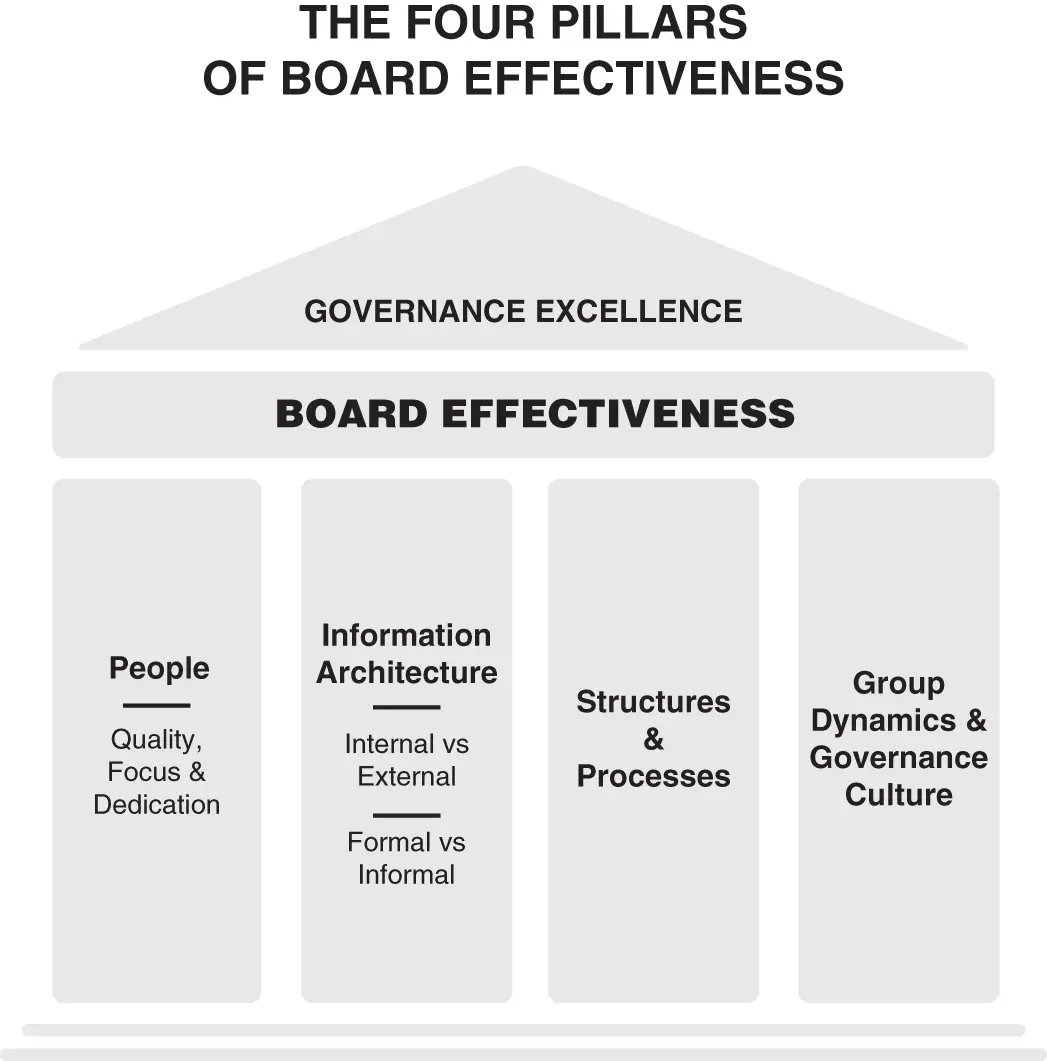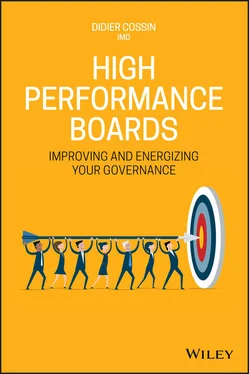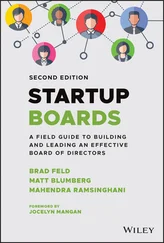‘That's great, Thorsten’, she said. ‘Board service is one of the most rewarding experiences any professional can have during their career, and I think you stand to gain a lot. But tell me’, Joanne said, putting down her fork and looking intently at the young man, ‘what is it about your experience that leads you to think you could make a meaningful contribution to Kloetzel?’
‘I know how companies are thinking about the costs and benefits of major transactions’, Thorsten said. ‘I could help Kloetzel think about whom they could approach and with what messaging to expand in major markets, which is part of their strategy’.
Joanne asked him about Kloetzel's current performance, and whether there were discrepancies across major markets. Thorsten shook his head. He didn't know the details. He dug in his pocket for a pen to make a note .
She pointed out the difference between board service and an executive director role. ‘You're not there to tell management how to do their job’, she said. ‘You're there to challenge them on the strategy to make sure it's a good one, and to help them to get what they need to be able to do it, and then to check that they actually do it’.
Then Joanne asked Thorsten the following questions:
People: Who were Kloetzel's current board members? What kind of skills, background, personality, and expertise did they have? How many other independent, non-executive directors were there? What kind of diversity and breadth of experience did they have? And how committed were they?
Information architecture: What kind of information did he have access to that would help him to support Kloetzel in delivering its strategy and monitoring its risks? Who in his network could help? What kinds of social media was he following?
Structures and processes: What kind of structures and processes did the Kloetzel board have in place? How were these helping it to stay ahead of regulation trends in the financial services industry? Did the board have a risk committee? An investment committee? Would Thorsten be able to serve on either of these?
Dynamics: Had he spent enough time with the chair of Kloetzel? Did he like him and his style? What about the other directors? How were the interactions? How did the board engage with the firm's senior executives? And how much passion about the firm could he feel?
‘With all due respect Aunt Joanne, aren't you ahead of yourself?’ Thorsten asked. ‘Won't I have time to figure this out once I'm on the board?’
Joanne thought back to a board she had sat on – an Indian tech company, where she had submitted her resignation after just six months. She wished she had done her due diligence exercise better before joining that board .
‘Fundamentally, Thorsten, it comes down to two questions’, Joanne said. ‘The first is: is this a good board which I want to be part of?’ He nodded with vigour. ‘The second is: am I good for this board?’
Joanne smiled at the young man. ‘Saying no to the wrong board appointment is just as important as saying yes to the right one’, she said. ‘If you don't think you will be able to usefully contribute, do yourself a favour and save yourself from a world of frustration and pain’.
‘Thanks Aunt Joanne’, Thorsten said, slumping a little in his chair. ‘I guess I have some homework to do’.
CHAPTER 1 The Four Pillars of Board Effectiveness
Over the past decade, we have witnessed dramatic and unprecedented developments in business, politics, and society. The main upshot of this has been the growing realisation that governance is the determining factor behind the success and failure of organisations. And with fresh evidence of abdication of duty in the corporate and policy-making spheres emerging on a weekly basis, there are growing demands for better governance in different countries, and for all types of organisations – businesses, governments, NGOs, and many others.
When we refer to governance, we mean the quality of decision-making and implementation at the top of organisations – and the processes to ensure these. Increasingly, boards are seen as having a key responsibility and role as the ‘owner’ of governance in an organisation. It is their competence, structures, and integrity, and their interactions with CEOs and management teams, that shape the governance DNA of organisations.
Until a few years ago, governance and boards were considered to be well understood, and operating along standard and predictable lines. As a result, the subject attracted relatively little attention from researchers. But the situation changed significantly as more stories of corporate malfeasance appeared in mainstream media, industry publications, and academic journals, inevitably accompanied by the question ‘Where was the board?’
Indeed, events during the past decade have made it clear that boards can fail in various ways. They have failed to manage risks, failed to contribute proactively to firm strategy, failed to identify the ‘right’ team, and, in some cases, failed to deal with integrity issues and possibly outright fraud. We will discuss board failures and challenges in more detail in Part II.
Partly as a consequence of these much-publicised and damaging failures, today's boards are eager to improve their performance and to continually fine-tune their effectiveness. They have become more cognisant than ever of their role in supporting their organisations' long-term success by aiming for world-class governance.
So, if business as usual is not an option for boards, what are the main dimensions to target when trying to make a board function better? How do we distil the key factors that contribute to board effectiveness?
In our work over the years inspiring the boards of organisations around the world toward greater success, my team and I have identified four discrete pillars of board effectiveness (see Figure 1.1). These are people quality, focus, and dedication; information architecture; structures and processes; and group dynamics and board culture. We will explore each of these pillars in detail in Chapters 4to 7.

Figure 1.1Governance Excellence Rests on Four Pillars
This simple framework for assessing a board's effectiveness has a deep-rooted underlying rationale, and its practical application has helped to transform boards for the better in many different contexts. These include large publicly traded companies, family owned businesses, non-profit organisations, governments, and other bodies, across all geographies, and in both developed and developing contexts.
The four-pillar methodology, focusing on systematic and continuous improvement along each dimension, has proven to be a strong asset for all types of organisation.
The First Pillar: People Quality, Focus, and Dedication
A boardroom is a social place, as is business in general. Therefore, the first of the pillars that support a board's effectiveness consists of the people who socialise, interact, learn, make sense of situations, and reach decisions in the boardroom. Their quality, focus, and dedication are often what makes or breaks a board's ability to perform effectively.
The quality of the board's composition and functioning is crucial. For starters, members of the board and its committees are expected to have the necessary and relevant knowledge. Boards are typically composed of experienced, accomplished individuals from a variety of backgrounds, including top managers, public officials, and education experts. Yet these backgrounds do not automatically give them the knowledge they need to contribute effectively to the work of a specific board.
Читать дальше













